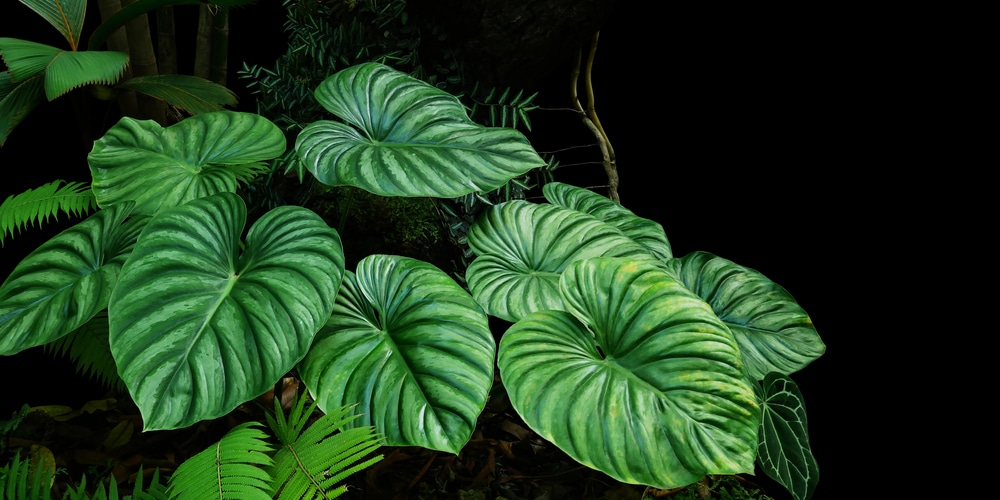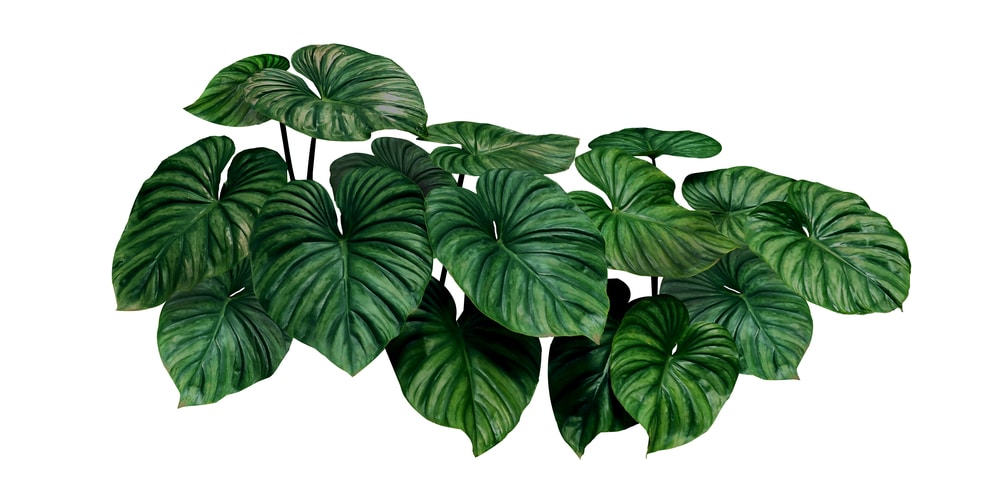Philodendron Plowmanii is a species of flowering plant in the Araceae family. In its native environment, it grows enormous and is native to tropical rainforests in South America. This species is reportedly naturalized in Taiwan and much of coastal South Florida from Palm Beach County to the Florida Keys. Let’s look at how to grow and care for a Philodendron Plowmanii.
What is a Philodendron Plowmanii?
The plowmanii is a large species of philodendron that can grow up to 30 feet tall in its natural environment. When grown as a houseplant, it will remain more compact. This plant has large heart-shaped leaves that are glossy and dark green. The foliage has darker-colored veins. It is very similar to Peperomia Peperomia
Like all Philodendrons, the plowmanii is toxic to humans and animals if ingested. Symptoms include vomiting and diarrhea. In the worse cases, pets and young children can be poisoned, which could prove fatal. Keep tropical plants out of the reach of children and animals.
How to Care for a Philodendron Plowmanii
Philodendron Plowmanii prefers bright indirect sunlight, moist soil, and fertilizer once a month. This species has the potential to grow very large. If you live in USDA zones warmer than zone 10, the Philodendron Plowmanii can survive outdoors year-round. Here are some tips to help you grow and care for a philodendron plowmanii.
Sunlight needs
This species of Philodendron prefers bright indirect light. It does not do well when in full sun, as sunburn can occur. Filtered light will help prevent the leaves’ tips from burning, which would cause the plant to dry out and die back.
Watering Requirements
When you water your plant, make sure and water it thoroughly and then let the top of the soil dry out before you give it it’s next watering. If you do not allow the top of the earth to dry out between waterings, this can cause root rot, eventually killing your plant. The exact amount of water your plant requires will depend on the climate and season. Most people find their plant needs to be watered at least once a week. You can reduce watering in the winter.
Temperature and humidity
During the growing season, this plant likes temperatures around 80 F during the day and no less than 50 F at night.
Soil
When your plant begins growing new shoots and becomes top-heavy, it might be time for a larger pot. If you need to transplant your plant, wear gloves when handling it because the sap is toxic and can cause an allergic reaction in some people.
When repotting your plant, use soil that’s loose and well-draining. You can add perlite, peat moss, sand, or bark to a standard house plant soil. Philodendrons like soil to be neutral or slightly acidic. A soil with a pH range of between 5.0 and 7.0 is perfect for the philodendron plowmanii. It’s also a good idea to put some stones or gravel into the bottom of the pot to help with drainage.
Fertilization
While this species of Philodendron is growing, you should feed it every month using a general all-purpose fertilizer that is diluted to half the recommended strength on its label. You don’t need to fertilize your plant in the winter.
Philodendron Plowmanii Problems
The most common problem that you will run into with this species of Philodendron is root rot. If you let your plant become waterlogged, the roots can turn soggy and begin to rot. This will affect the health of your plant; the leaves may wilt and turn yellow or brown. You may be able to save your plant by removing the soil, cutting off affected roots, and treating your plant with a fungicide.
If the tips of your plant’s leaves begin to curl, turn brown and eventually die back, then it could be due to too much light. You can move your plant to a shadier location out of direct sunlight.
Philodendrons are pretty pest resistant but can be affected by sap-sucking insects such as mealybugs, spider mites, and aphids. If your plant becomes infested, you can treat it using neem oil or insecticidal soap.
Conclusion
The philodendron plowmanii is excellent for beginners and doesn’t require a great deal of attention. As long as you remember that this plant likes to have the humidity levels in your home increased during the colder months, and it needs to be placed in indirect sunlight when grown indoors, then it will continue to produce new leaves for many years to come.
Similar Philodendron: Philodendron Birkin

